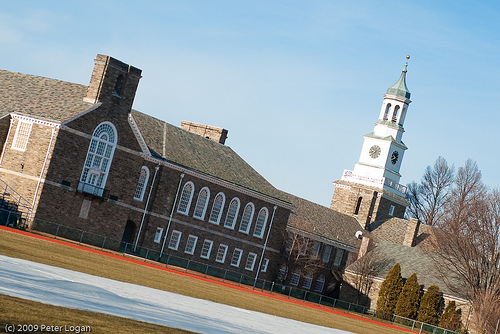Some excellent bottom-up thinking on education policy from Matt Yglesias:
There’s substantial variation in the performance of different charter [schools]. What you need to do is identify schools that consistently perform poorly and shut them down. Then you create space for more effective models to replicate themselves and also for new ideas to be tried out. The promise of charter schools is that by allowing more experimentation we’ll find some good models. But it’s not as if public education in the United States currently achieves some theoretical maximum of badness—with experimentation we’re also discovering bad models. You’ve got to shut those models down, while at the same time curbing state legislators’ tendency to impose arbitrary numerical caps on the total quantity of charter schools. We should let a thousand flowers bloom and then kill 20-30 percent of them if they turn out to look ugly.
I’ve written before about the importance of cheap failures for innovation. Charter schools are a strategy for improving education by making it cheaper and easier to create new schools and experiment with new educational techniques. But this strategy will only work if it’s also relatively easy to shut down schools once they’ve failed to pan out. If charter schools are allowed to stay open indefinitely, regardless of performance, then it’s totally unsurprising if charter schools fail to out-perform traditional public schools. Innovation requires experimentation, competition, and a willingness to cut our losses once we’ve determined that a particular experiment isn’t working.




Bad charters don’t stay open indefinitely because no one has to enroll. Not everyone will necessarily pull kids out of a bad charter, but new people will be less interested and will go other places.
Most bad charters see they’re starting to lose people and then imitate the more successful charters, and improve. It’s a really small percentage (I believe Caroline Hoxby says ~5 percent) that never get with the program.
So my point was (before my computer crashed and lost the rest of that comment) that closing bad charters is built into the bottom-up charter school process. It doesn’t have to come in the form of a “Close thou evil charter school!!!” order from above that some charter critics envision.
Yglesias is sometimes depicted as a staunch Democratic statist, but when I actually read what he says he comes up with great stuff like this all the time. I saw a “debate” between him and Radley Balko in which they essentially agreed throughout the entire conversation. Last time I checked Balko is not exactly a tool of the Democratic machine.
Anyway, he’s obviously right here; even the crippled, half-assed chartering experiments in DC improved life for thousands of children — before they canceled it anyway. Just like with the Wikipedia / Open Source software dynamic, despite all of the empirical evidence people are still deeply suspicious of bottom-up processes. We need to get over that and look at the facts.
it is NOT cheap for a charter school to fail! if a charter school fails, it has failed the majority of its students. i submit that that is a high price indeed.
cryptozoologist, I agree that it’s not cheap in an absolute sense, but the question is what’s the alternative? Many traditional public schools have been failing their students for decades, and have proved impervious to top-down reform efforts. A charter school that’s closed down after 5 years of poor performance is cheap relative to a traditional public school that’s allowed to continue failing kids for decades.
Obviously, it would be great if we could find an education reform agenda that would guarantee that every school is successful. But at some point, we have to recognize that not every school is going to succeed, and come up with a system to deal with that reality. In my view, that system has to include a process for shutting down the worst-performing schools and transferring their kids to better schools. In this respect, charter schools are an improvement over the top-down system it has partially replaced.
Right, “cheap” is a relative term here. It could be argued that few things have been as expensive to our society as the continued failure of so many public schools for so many years. As Yglesias said, letting “a thousand flowers bloom” and weeding out the bad ones is certainly preferable to maintaining the status quo, which in some areas of the country has a stunningly high failure rate, however you choose to measure it.
I like the argument, but you can see cryptozoologist’s point here. An education strategy based on the idea that some students are going to be collateral damage is not an easy sell, no matter how messed up the reality of the current system. If your idea is that this is a system that can more quickly respond where kids are being failed, you should emphasise that. I don’t know what the right phrase would be, but I’m pretty sure “cheap failures” ain’t it.
Pete, point taken!